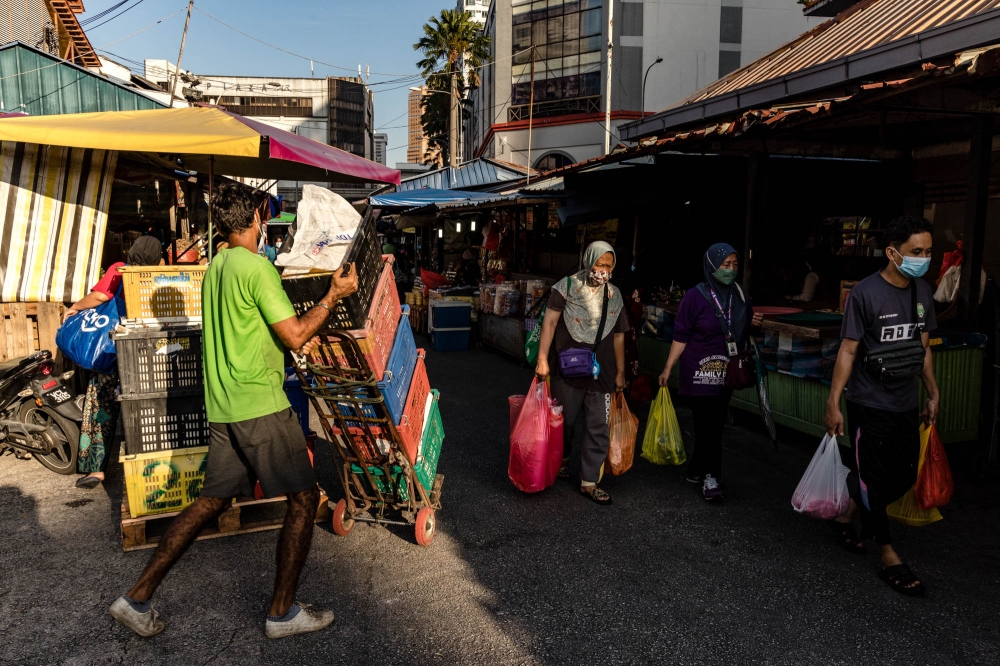JUNE 22 — The high cost of living in Malaysia has always been a problem, and it only became worse during and even after the Covid-19 outbreak as a result of income loss or decreased income that was unable to keep up with the rising cost of goods and services.
According to the World Bank’s High-Frequency (HiFy) Phone Survey 2023, almost 70 per cent of lower-income households in Malaysia self-assessed as having insufficient financial resources to cover their monthly necessities, and more than 60 per cent of these households reported having no savings.
Malaysian Prime Minister Datuk Seri Anwar Ibrahim has proposed RM64 billion in subsidies, assistance, and incentives to aid the populace in coping with the growing expense of life.
Datuk Seri Anwar Ibrahim, who also serves as the finance minister, stated that 2023 is the year the government hopes to end severe poverty, which affects 130,000 people nationwide and cuts across all racial, geographic, and socioeconomic groups.
If the government wants to handle the increasing cost of living issue successfully over the long term, it must move past the current subsidy-based approach and come up with ways to pay a living wage.
According to estimates from 2022, inflation will stay at 3.3 per cent. But Datuk Seri Anwar Ibrahim emphasised that if global supply chain problems intensify, the situation can get worse.
It is essential to address and prioritise the issue of poverty by adopting supply chain rationalisation to reduce the cost of living.
Supply chain rationalisation is the process of optimising the supply chain by reducing the costs of goods and services and improving efficiency. This can be done by reducing the number of suppliers, consolidating suppliers, and improving logistics.
The strategies that can be used to achieve supply base rationalisation include choosing a single or dual source of supply, creating an approved or preferred supplier list, outsourcing a variety of services to do away with individual suppliers, and grouping purchases with other customers to make larger suppliers more economically viable.

When faced with inflation, it would be advisable to avoid buying imported items, as Malaysia has a plentiful supply of these components.
Bank Negara Malaysia (BNM) stated that a review of the supply chain is necessary to manage prices, which includes varying the sources of goods imported to reduce concentration concerns.
Supply chain rationalisation considers strategies to improve each step of the procurement process, from procuring goods and services to delivering the finished product.
By putting this strategy into practice, duplications may be decreased, and efficiency increased, resulting in companies running more smoothly and, eventually, cost savings for both business owners and customers. Hence, poverty can be reduced through a reduction in the cost of living.
An example is Nestle, which has implemented supply chain rationalisation by behaving in a fully transparent way, publicly disclosing Nestle’s biggest supply chains and related volumes, and delisting supply chains that fail to deliver continuous improvements against the Responsible Sourcing Standard.
Other than that, it is more important than ever for Malaysia to concentrate on fostering domestic small and medium-sized company (SMEs) growth through automation and digitalisation in order to reduce reliance on foreign sources of funding due to the decline in FDIs, according to MIDA 2023.
By utilising technology and automation, processes may be made more efficient, and manual labour expenses can be decreased in the supply chain.
Optimised supply chains generally have 15 per cent overall costs, less than 50 per cent inventory holdings, and a faster cash-to-cash cycle by nearly three times compared to under-optimised supply chains.
This may be accomplished in a number of ways, including by putting warehouse management systems into place, using robots to do picking and packing duties, and utilising transportation management systems to plan delivery schedules and optimise routes.
Automation and technology may assist in decreasing labour costs while also accelerating and improving decision-making, speeding up processes, and minimising waste and mistakes. This may result in additional supply chain cost reductions, leading to a reduction in price and the cost of living.
By implementing supply chain rationalisation as well as focusing on automation and digitalisation to enhance supply chain optimisation, costs of living may be reduced, and SDG 1 can be achieved. It is hoped that poverty in all its forms may be ended in Malaysia.
*Profesor Suhaiza Hanim Mohamad Zailani is Director of the Ungku Aziz Center for Development Studies, Universiti Malaya.
**This is the personal opinion of the writer or publication and does not necessarily represent the views of Malay Mail.





















